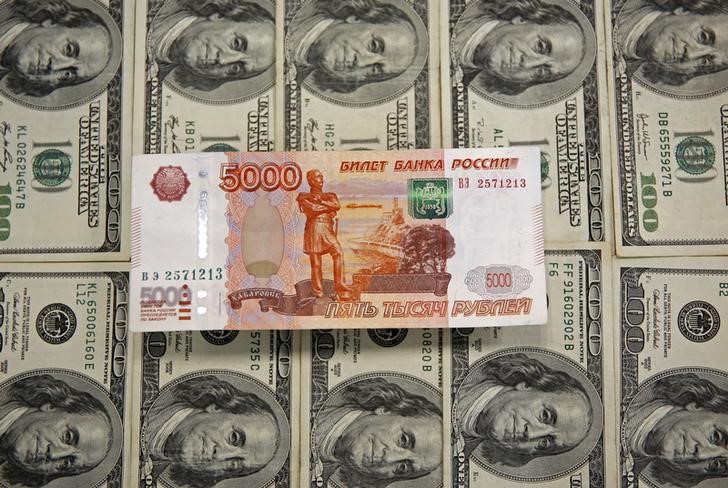By Gina Lee
Investing.com – The dollar was up on Monday morning in Asia, while the Russian rouble fell to a record low. Tensions over the Russian invasion of Ukraine continue to rise, with Western nations announcing fresh sanctions against Russia and Russian President Vladimir Putin putting nuclear-armed forces on high alert.
The U.S. Dollar Index that tracks the greenback against a basket of other currencies rose 0.75% to 97.345 by 11:13 PM ET (4:13 AM GMT).
The USD/JPY pair inched down 0.01% to 115.55. Japan released data, including industrial production month-on-month and retail sales year-on-year for January 2022, earlier in the day.
The AUD/USD pair fell 0.73% to 0.7179. Australia also released data, including private sector credit and retail sales month-on-month for January, and the Reserve Bank of Australia will hand down its policy decision a day later.
The NZD/USD pair fell 0.78% to 0.6682, with New Zealand releasing its ANZ business confidence index for February.
The USD/CNY pair inched down 0.10% to 6.3109 and the GBP/USD pair was down 0.43% to 1.3348.
The rouble fell to as low as 119 per dollar in early trading on Monday, hurtling past a previous low of 90 roubles per dollar.
Western powers blocked big Russian banks from using the global SWIFT payment system. The Central Bank of the Russian Federation (Bank of Russia) responded by announcing measures to stabilize domestic markets and the rouble, while the central bank itself was slapped with restrictive measures to prevent it from deploying its international reserves and undermining the sanctions.
Putin also put Russia’s “deterrence forces” on high alert, which added to the tensions considering that the forces wield nuclear weapons.
Meanwhile, the rouble’s losses as the Ukraine conflict intensifies were the dollar’s gains. “In the near term, we think the dollar faces a risk of pushing above the 97.47 resistance level,” Commonwealth Bank of Australia (OTC:CMWAY) FX strategist Carol Kong told Reuters.
The extent of the dollar’s gains would depend on any further leap in volatility, the size of the selloff in global equities, and assessment of central bank’s tightening programs. High energy prices were also capping the yen, given Japan imports the bulk of its energy requirements, she added.
Investors are now betting that there is a 95% chance of the U.S. Federal Reserve hiking interest rates by 25 basis points when it meets in March 2022, according to CME’s Fedwatch tool. Expectation is also growing that the Ukrainian conflict will deter the European Central Bank from making any strong hawkish moves.
In Asia Pacific, an official from the Reserve Bank of New Zealand told Reuters that it is too early to assess what impact, if any, the Russian invasion of Ukraine might have on policy and that it has more work to do on interest rates to control inflation.


